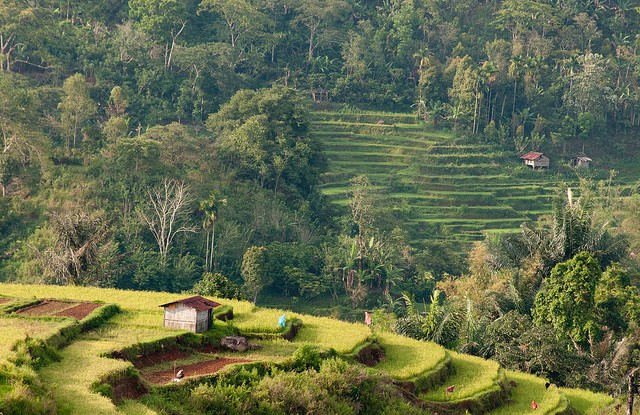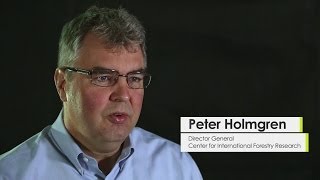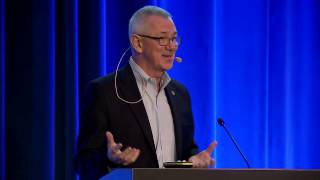
BOGOR, Indonesia (4 February 2014) — The United Nations’ Open Working Group on Sustainable Development Goals (SDGs) will convene for its final meeting from 3-7 February 2014 in New York. The 30-member working group will focus on the role of biodiversity, forests and oceans in human development. CIFOR scientist Daju Pradnja Resosudarmo will make a presentation on forests in the next development framework. Following this meeting, the group will develop a report that will be handed to UN Secretary General Ban Ki-moon in September.
At a glance:
- Countries are designing Sustainable Development Goals to replace the Millennium Development Goals in 2015
- These goals, encompassing multiple sectors, will guide global development toward the achievement of tangible goals such as reducing poverty, increasing health and well-being, etc.
- Forests, agriculture and other landscape uses will be crucial components for achieving many of the potential goals, including reducing poverty, increasing health and well-being, and addressing climate change.
- See the dual SDG and climate change framework processes at a glance here.
What are Sustainable Development Goals?
- In 2015, the eight Millennium Development Goals (MDGs) that currently make up the global development framework will come to an end. The MDGs made measurable progress in reducing levels of poverty and hunger while increasing access to primary education and maternal care, among others.
- A UN Task Team report, prepared in the lead-up to the 2012 United Nations Conference on Sustainable Development (also known as “Rio+20”), praises the impressive progress made toward achieving the MDGs — but highlights shortcomings and remaining challenges:
- Getting environment out of its corner: In the MDG framework, the environment was addressed under a single goal — MDG 7. A new framework can allocate a central role to environmental factors, treating them as a basis for all development outcomes.
- Working toward universal goals: The MDGs focused on outcomes that should be achieved within developing countries, such as fighting poverty and hunger. In this framework, the role of developed countries was limited to providing development aid and technical assistance. For the new goals, many are calling for responsibilities applicable to developed countries, including more responsible production and consumption.
- Building real partnerships for development: The MDGs emphasized actions within developing countries and the traditional aid framework. Partnerships among key actors like the private sector and transnational civil society, as well as other innovative forms of collaboration, were rarely realized.
- Deeper goals for greater impact: Many goals focused on quantity rather than quality of outputs: food security was measured through access to food, not nutrition; education through enrollment, not success rates. New goals enable a more detailed look at development achievements.
- Focusing on quality of development: The MDGs provided no guidelines regarding the type of development that is desirable. Stakeholders are now arguing for goals that put sustainability and equity first.
- Sustainable Development Goals as a new global development agenda were first proposed by the governments of Colombia, Peru, Guatemala and the United Arab Emirates ahead of the Rio+20 Conference in 2012.
Who will select the final set of goals and when?
- The Open Working Group (OWG) on Sustainable Development Goals is a 30-member group, reporting to the UN General Assembly (UNGA).
- For the first time, countries could make use of a new regulation that allows them to share memberships. Many like-minded regional countries — such as France/Germany/Switzerland or China/Indonesia/Kazakhstan — are sharing seats. In total, 70 countries are represented in the Open Working Group.
- Since March 2013, the Open Working Group came together for seven meetings, discussing a wide range of issues: sustainable agriculture, population growth, climate change and equality, to name a few.
- The UN is also collecting global views through other processes:
- A High-level Panel led by Indonesian President Susilo Bambang Yudhoyono, Liberian President Ellen Johnson Sirleaf and UK Prime Minister David Cameron submitted recommendations to Secretary General Ban Ki-moon in May 2013 — among them a call for a transformational shift to put sustainable development at the core of all future interventions.
- National and thematic consultations are taking place in more than 60 countries, reaching out to a wide group of stakeholders from academia, civil society, the private sector, government and youth organizations.
- A Sustainable Development Solutions Network under the leadership of Jeffrey Sachs is bringing together universities and research institutions for scientific advice.
- In September 2014, the UN General Assembly will start discussing the SDG framework based on the recommendations made by various bodies.
- A High-level Political Forum on sustainable development, comprising heads of states, will make the final decision in September 2015.
- Technical and scientific advisory organizations will work out the details in parallel to decision-making processes.
What roles do forests, agriculture and other land-use sectors play?
- Forests, agriculture and other land uses are crucial for the achievement of a wide range of SDGs currently considered: poverty eradication, employment, food security, nutrition and safe drinking water:
- Forests protect watersheds that provide 75% of the planet’s drinking water.
- Forests store twice as much carbon as the atmosphere.
- Agricultural production needs to be increased sustainably in order to feed a human population of 9 billion by 2050.
- Sustainably managed landscapes also contribute indirectly to a number of proposed aspirations like gender equity, good governance and collaborative development partnerships.
- Still, land uses cause around 30% of emissions worldwide as agriculture is the biggest driver of deforestation (80% of forests cleared are turned into agricultural lands).
How did we get here?
- The United Nations Forum on Forests discussed Sustainable Development Goals during its May 2013 meeting.
- Ireland (for the EU) strongly supports including forests in the SDGs
- Indonesia called for “cross-cutting SDG that includes poverty eradication, sustainable growth and equity, and forests” (instead of specific stand-alone forest goal)
- Ghana and China also urged for a cross-cutting approach to forests and development, with a focus on poverty eradication
- Past meetings of the UN Open Working Group, for example those discussing agriculture and climate change, have identified the following priorities in relation to land use changes:
- Raising smallholder productivity and rural income on a sustainable basis needs to be achieved to end hunger and poverty
- Agricultural value chains in developing countries and food waste in developed countries need to be addressed
- Combination of traditional farmers knowledge and latest scientific findings to inform sustainable agriculture
- Role and commitments of UNFCCC should be respected and inform climate change thinking in SDGs
- Common but differentiated responsibilities: countries acknowledged the principle that both developed and developing countries should take action against climate change, but stressed that the principle “evolves over time”
- Climate change challenge should be reflected through several related targets, among them: protecting forests, food security, water management and promoting low-carbon, climate-resilient development paths
- Held alongside the UNFCCC COP19 in Warsaw, the first Global Landscapes Forum — attended by 1,200 people, among them 180 climate change negotiators — drafted recommendations for SDGs.
- Global Landscapes Forum participants identified two mutually reinforcing options for addressing land uses in the SDG framework:
- Treating landscapes as a cross-cutting issue, contributing to a variety of possible goals
- Designing a stand-alone goal on sustainable landscapes
The success of this sustainable landscapes goal could be measured using a set of tangible indicators and targets, including improved livelihoods, food security, ecosystem services, biodiversity and resource efficiency.
A high-level session of the Global Landscapes Forum in Warsaw discussed the role of landscapes in future development and climate agendas. The panel included Finland’s Environment Minister Ville Niinisto, Rwanda’s Minister of Agriculture Agnes Kalibata, Danone’s Chief Sustainability Advisor Bernard Giraud and World Resources Institute President Andrew Steer. The session was moderated by CIFOR’s Director General Peter Holmgren.
We want you to share Forests News content, which is licensed under Creative Commons Attribution-NonCommercial-ShareAlike 4.0 International (CC BY-NC-SA 4.0). This means you are free to redistribute our material for non-commercial purposes. All we ask is that you give Forests News appropriate credit and link to the original Forests News content, indicate if changes were made, and distribute your contributions under the same Creative Commons license. You must notify Forests News if you repost, reprint or reuse our materials by contacting forestsnews@cifor-icraf.org.

